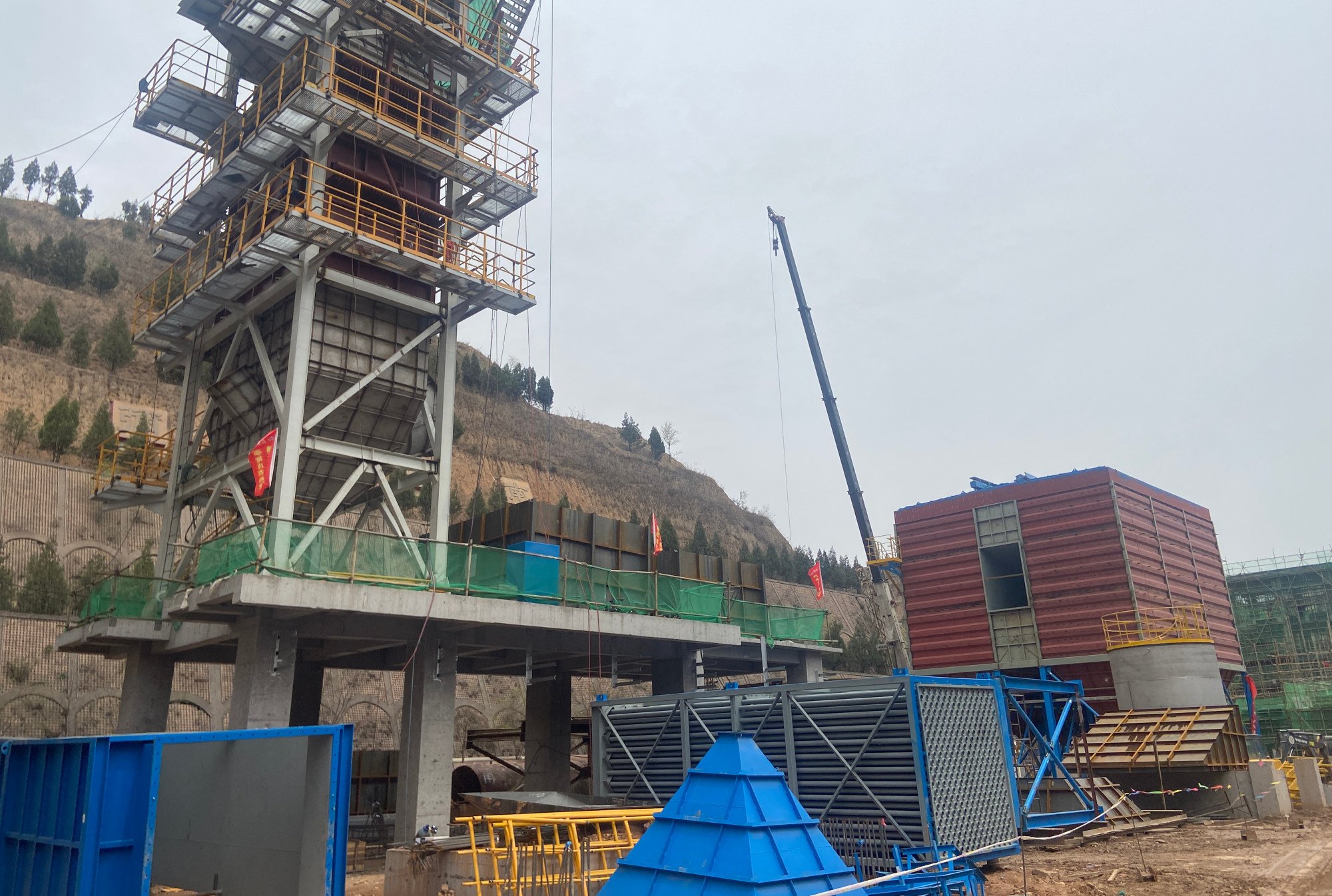A plant in Shanxi is being upgraded so that it can produce aluminium from low-grade bauxite that was previously unusable
China is a top aluminium producer and consumer but it lacks the high-quality bauxite needed to make it. The country instead relies on imported aluminium ore from Guinea and Australia – but that could soon change.
A plant in the central province of Shanxi is being upgraded with a French technology that will enable it to produce aluminium from China’s low-grade ore that was previously unusable.
The Bayer process, invented by Austrian chemist Karl Josef Bayer in 1888, is widely used to refine bauxite into smelting-grade alumina, or aluminium oxide – the precursor to aluminium.
Do you have questions about the biggest topics and trends from around the world? Get the answers with
SCMP Knowledge
, our new platform of curated content with explainers, FAQs, analyses and infographics brought to you by our award-winning team.
But it is not an efficient or cost-effective way to refine bauxite with a high silica content, the main ore type in China. Silica is an impurity that could result in a substantial loss of alumina and caustic soda – a solution used to dissolve bauxite in the Bayer process.
After a decade of research, French chemist Yves Ocello, from green tech company IB2, has come up with a way to transform low-grade bauxite into a high-quality material. The process neutralises silica and sulphur, meaning high-silica bauxite can be refined using the Bayer method.
In 2023, IB2 entered into a 22-year pact with the Chinese company Liulin Senze Coal & Aluminum to transition to their technology.
Under the deal, IB2 engineers in Europe will monitor 60 parameters in the alumina production process – including reagent dosing, thermal gradients and pH control – at the plant in Shanxi province and recalibration will take place every three to six months to adapt to changes.
Romain Girbal, CEO and co-founder of IB2, stated that this technology will allow Beijing to reach its objective of decreasing reliance on foreign high-quality bauxite imports. It aims to utilize local low-grade deposits instead and manufacture aluminum through more environmentally friendly processes.
He stated that this directly facilitates China’s approach to owning its supply chain inputs, ensuring compliance, and operating extensively without external vetoes.
“IB2 will allow China to rebalance its bauxite supply towards a more China-centred strategy, which is aligned with Asia looking for more commodity sovereignty in reaction to a more unsecured globalised trade market.
As time progresses, we anticipate that China’s dependence on imports from Guinea and Australia will decrease significantly. While these sources won’t disappear entirely, they will lose much of their influence over negotiations, pricing, and strategic importance.

Based on information from the data visualization platform Observatory of Economic Complexity, China imported aluminum ores worth $10.6 billion in 2024. The primary suppliers were: Guinea ($7.65 billion), Australia ($2.31 billion), and Turkey ($187 million). In contrast, Chinese exports of these materials amounted to only $5.9 million.
Australia possesses the globe’s most extensive deposits of bauxite. The country’s aluminum sector serves as a vital source of employment in regions beyond Australia’s principal urban centers, offering approximately 17,000 positions, as stated in a 2021 study conducted by the Australian Aluminium Council, an industry organization.
It was mentioned that although alumina and aluminum ores (bauxite) ranked as Australia’s fourth-largest mineral export, the product
aluminium
It was their most profitable manufactured export.
The utilization of this lightweight industrial metal has experienced significant global expansion, particularly due to its extensive use across various industries including automotive, building and construction, transportation, and consumer goods like window frames, airplanes, and drink containers.
Liulin Senze Coal & Aluminum presently generates 1.3 million tons of alumina annually, which is worth approximately 3 billion yuan (US$412.5 million).
The company from China provides services to major state-owned entities like Shaanxi Non-ferrous Metals Holding Group, China Aluminum International Trading Group, and Jiuquan Iron and Steel Group.
Girbal stated that the initial full-sized unit reached an 85 percent completion rate by late April and will commence operations at an industrial level come July, with expectations set for early 2026 to achieve total output.
The initial module is engineered to handle 600,000 tonnes of low-quality bauxite per year. The subsequent expansion phase aims to boost the yearly output to 3 million tonnes and is poised to advance into the engineering phase shortly.
Girbal stated that the benefaction layer, which isolates valuable minerals from undesirable materials, is positioned before the digestion process. This setup provides a high-quality, low-contamination input directly into standard Bayer processes.
He mentioned that very low-quality bauxite was refined there, achieving a purity level higher than that of imported high-grade bauxite.
Girbal states that the system cuts down on ore usage by as much as 30 percent for each tonne of alumina generated.
“This indicates that refineries can produce the same output using considerably less bauxite, decreased reagent amounts, and substantially lowered environmental impact — all without changing the fundamental Bayer process setup,” he stated.
Using traditional methods, approximately 4 metric tons of premium-quality bauxite produce about 2 metric tons of alumina. Subsequently, through the process of electrolysis, this yields roughly 1 metric ton of aluminum.
Girbal described the technology as the “direct implementation of government-mandated directives,” referring to the two-year plan for the aluminum sector unveiled by Beijing in March.
According to the plan, by 2027, “the robustness and safety of the industrial chain and supply chain will notably enhance.” Additionally, China aims to boost domestic bauxite reserves by 3 to 5 percent and achieve an increased production of recycled aluminum exceeding 15 million tons.
This initiative also promotes a more sustainable industry through enhanced manufacturing processes, exploring low-carbon melting techniques and precise machining methods, along with utilizing at least 30 percent renewable energy sources in aluminum production.

Girbal stated that his firm’s technology would assist Chinese manufacturers in “boosting output, decreasing reagent consumption, and adhering to local ESG policies,” alluding to directives from Beijing.
He mentioned that refineries depending on a mixture containing 60 percent foreign ore could completely transition to domestic supplies, thereby lowering operational expenses and boosting production output.
“As more refineries embrace IB2 technology, the quantity of imported premium-quality bauxite will start to decrease—not entirely, but sufficiently to alter the balance between using domestic Chinese bauxites and those brought in from abroad,” Girbal stated.
Outside of China, he anticipated an increase in self-reliance within the aluminum sector, noting that his firm had pinpointed India, Saudi Arabia, Kazakhstan, and Turkey as promising customers.
He mentioned that bauxite deposits in Central Asia contained elevated levels of sulfur and silica, whereas the Middle East enforced strict rules regarding water and reagent usage.
In India, which ranks as the globe’s second-biggest producer of aluminum, environmental concerns and limited land availability present significant hurdles when dealing with red mud—a hazardous and caustic residue from aluminum manufacturing.
He mentioned that in all these scenarios, IB2 has either already been validated or is currently being actively engaged.
As nations such as China, India, Kazakhstan, and Saudi Arabia become capable of processing their own lower-quality ores just as effectively or even more so—without relying on imports, mixing with higher-grade materials, or breaching environmental, social, and governance standards—the influence wielded by present-day suppliers diminishes. The advantages from shipping cost differentials decrease, price markups lessen, and reliance reduces.
More Articles from SCMP
Hong Kong will host an important summit following the delayed journey of political leaders to the United States.
Get acquainted with MLB ace Gerrit Cole’s spouse, Amy, who hails from a clan of sports enthusiasts; she competed in softball during her college years and the impending pair shared workout sessions—but what prompted her to have him await an entire year before their first date?
For eateries in Hong Kong, art serves a purpose beyond mere decoration.
China showcases Fujian aircraft carrier’s catapult technology in motion.
The article initially appeared on the South China Morning Post (www.scmp.com), which is the premier source for news coverage of China and Asia.
Copyright © 2025. South ChinaMorning Post Publishers Ltd. All rights reserved.


Leave a Reply